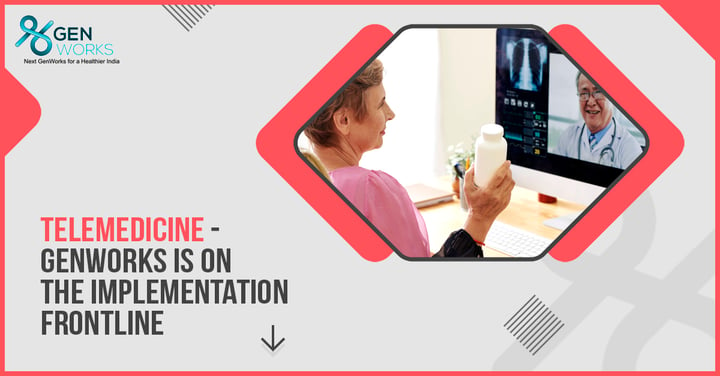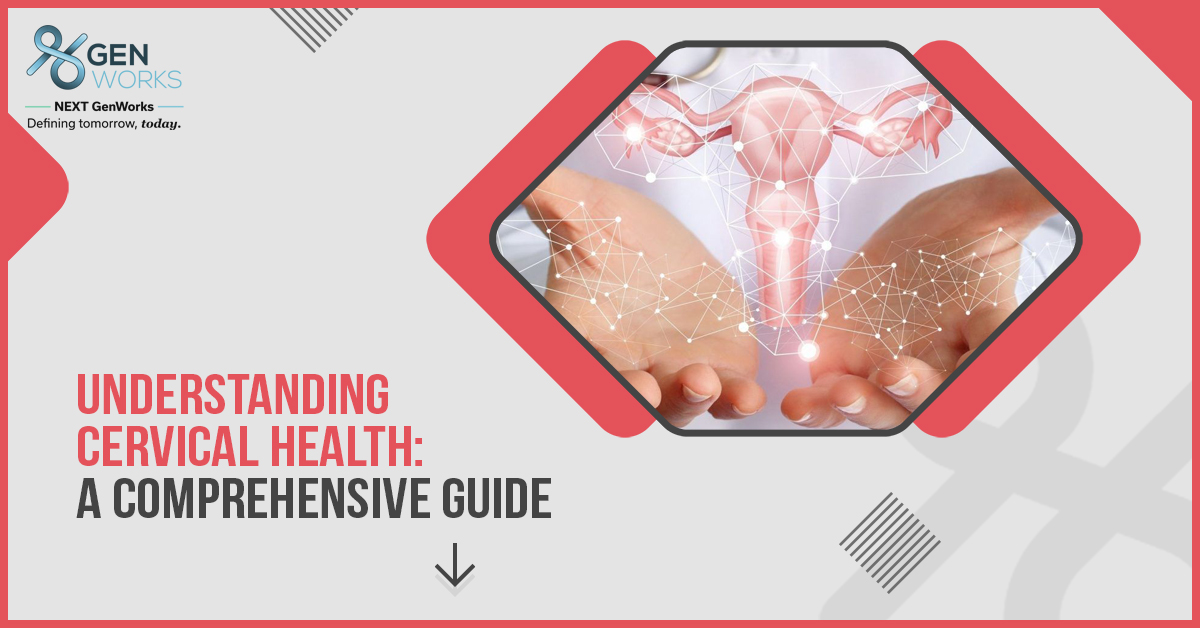Telemedicine – GenWorks is on the implementation frontline

The Indian government is battling challenges like the patient-bed ratio in India, which is among the lowest in the world, the perennial shortage of qualified doctors and paramedical infrastructure, low penetration of medical insurance and low investment in creating the required infrastructure.
In spite of all these challenges, India's healthcare market is estimated to be over $100 billion and growing at a CAGR of 11%, the highest among the BRICS countries. From a McKinsey Report: If telemedicine replaced 30 to 40% of in-person outpatient consultations, India could save up to $10 billion and improve care for the poor and those living in remote areas. Telemedicine could replace half of in-person outpatient consultations in India, and an accelerated implementation plan could enable the country to tap 60 to 80% of this potential by 2025,"
The report also emphasizes that creating standardized medical records for the Indian population will lead to better diagnoses and reduce errors at scale. There is proof that evidence-based care through digital platforms enhances the efficiency of both, doctors and nurses. If identifying information is removed, the data generated will help drive medical research and breakthroughs
The Indian Health Stack
NITI Aayog has proposed the National Health Stack (NHS), a virtual digital platform for healthcare in the country. The objective is to create online digital health records for all citizens by 2022 to facilitate telemedicine and upgrade the digital medical record infrastructure in the country.
It will be a big part of the Ayushman Bharat Scheme, launched by the Indian government. The health Sector will primarily depend on ICT (Information and Communication Technology) to deliver healthcare services since building physical infrastructure is expensive and time-consuming. Besides, it has always been difficult to get specialists and doctors to take up rural postings in the numbers required.
Long-distance medical care, or telemedicine will bridge the gap between resources available, the levels of training required and the data network that has already been built.
This means that patients can get safe, effective and efficient care at home or near home with the expansion of technology infrastructure
An ASSOCHAM report indicates that the telemedicine market in India is growing at a CAGR of 20% and is expected to touch $32 million in 2020.
Telemedicine has improved by leaps and bounds over the years and is no longer a passive video call between the patient and the doctor. There are several services patients can avail of at home. In these turbulent times, telemedicine offers an option to patients and caregivers who may otherwise have to travel long distances and deal with waiting times at the consultation room.
Healthcare is going Digital on the GenWorks Health Platform
While almost 60-70 percent of doctors are concentrated in urban areas, the rural population remains grossly under-served. According to estimates, Community Healthcare Centres (CHCs) in India face up to 80 percent shortage of specialists.”
GenWorks at the forefront of providing solutions to address the clinical care cycle and to improve efficiency and affordability The company offers a holistic telemedicine solution that is connected and complete.
The GenWorks digital health platform facilitates easy access and integrated solutions for Telemedicine. Right from remote screening for early diagnosis to evidence based treatment. The digital transformation required now is beyond a remote consulting, facilitating easy access to solutions for operational, clinical and shared decision support to ensure clinical effectiveness.
GenWorks sees this as a significant need even after the current Covid19 situation passes. There will be an uptick in the development of long-term solutions in future as well
Speaking about the recent release of Telemedicine Guidelines, S. Ganesh Prasad, CEO, GenWorks said that the guidelines are a welcome step in the right direction by prescribing the standards to be followed for consultation, training and maximising the expertise of available resources. They would help drive adoption and increase the geographical coverage of telemedicine.
Teleconsulting is just the beginning
Genworks Tele solutions offer consulting, device connectivity, specialist access, interpretation services, tele referral and remote monitoring.
GenWorks provides patients with access to specialists across the country, sets up appointments for consultation and examinations. A local paramedical team can be despatched to the patient's location to take readings of vital parameters and monitor the health of patients when required.
How does Tele ECG, Tele vitals and Tele Echo work?
Portable devices are despatched to rural homes with trained personnel to record and transmit patient information securely. Doctors can examine the results and provide feedback to the patient and the family as well as instructions given to the paramedics on steps to be taken. The data collected is stored and processed in accordance with medical record guidelines.
Integrating all information to create accurate patient profiles
While information and data from several devices is accessed, it has to be integrated into a single profile for doctors to evaluate and make decisions on. This is where the extensive experience of GenWorks' originating company, GE comes into play. GE is a pioneer and a leader in imaging and early diagnosis in India for decades now. GenWorks is building on this pedigree to deliver affordable care right across the country by sourcing and distributing technology, solutions and devices that are affordable and accessible.
While data from different devices will flow into a repository, the National Health Stack will provide the framework for the data to reside and be used by primary stakeholders for developing and improving medical infrastructure in India.
Privacy Challenges
India's data policy is already in place and the health data generated within the country is an important subset. From a Business Standard report in 2018: India’s health ministry has proposed a law to govern data security in the healthcare sector that would give individuals complete ownership of their health data. Individuals would have the absolute right to refuse or allow data to be generated, collected, accessed, transmitted or used. And data collectors such as hospitals would be prohibited from refusing treatment to those who do not want their data collected or used.
This would make India one of the world’s foremost jurisdictions in the regulation of healthcare data, at a time when governments around the world are scrambling to keep a check on who gets to generate and use data and how, especially as citizens do not completely understand the data privacy and security implications of the innumerable applications they wittingly or unwittingly use.
The implications of this are clear. Every company in the space must create the necessary controls to meet these standards. In a country where multiple languages are spoken at a distance of less than 100-200 kilometres, this raises unique challenges that must be dealt with. Health care data has always been a flashpoint because of the sensitivity involved.
Companies will have to devote a sizeable set of resources to meeting these requirements, in addition to scaling the technology, creating trained teams on the ground and delivering better healthcare to the millions of people in India's remote locations. The technology infrastructure is still evolving and like the early days of the internet, it may be a while before streaming video gets to be the dominant application. But there's no doubt that telemedicine will completely change the outlook and the delivery of healthcare in India in the near future. That seems ordained, even if it looks impossible at this point in time



